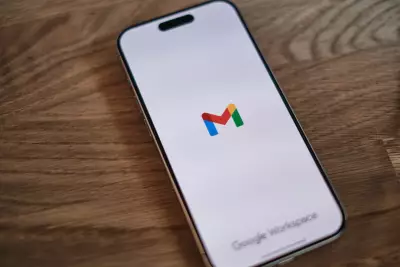What to Know About Unpaid Toll Text Message Scams
Table of Contents
- Published: Jun 16, 2025
- Last Updated: Jun 16, 2025
An increasing number of people are reporting receiving text messages about unpaid tolls. Although some of these messages are legitimate, fraudsters are now using this tactic to trick unsuspecting individuals into sharing personal information or making fraudulent payments.
Typically, these scam messages create a sense of urgency, pressuring recipients to act quickly before verifying the claim. By understanding how these scams work and the tricks used, you can avoid them and potentially save others from falling victim to such.

What is the Upaid Toll Scam?
The unpaid toll scam usually involves a fake notification sent via SMS, claiming that the recipient of the message has an outstanding toll balance to pay. The SMS often includes a link directing the recipient to a fraudulent website mimicking an official toll agency's payment portal. The scammer's goal is to use this redirection to steal personal information, payment data, or login credentials. Also, some links may install malware on the victim's device to compromise their security.
As a while, the unpaid toll scam is based on imitating real toll collection agencies and using convincing language or pressure tactics to exploit people's fear of penalties, making them more likely to fall for the fraud.
Common Tactics Used in the Scam
Scammers who perpetrate unpaid toll scams often use the following tactics to defraud their victims:
- Creating a Sense of Urgency: In order to get their victims to act quickly, scammers send messages claiming that immediate action is required in order for the victims to avoid late fees, legal consequences, or other penalties. The urgency tactic is needed to ensure that victims do not have enough time to verify the authenticity of the information in the message sent.
- Mimicking Official Messages: People who engage in the unpaid toll scams craft messages resembling those from legitimate toll agencies, using official logos or even spoofed phone numbers or web addresses. The aim is to make the communication appear credible to the victim.
- Offering Easy Payment Solutions: In order to lure their victims, unpaid toll scammers may provide web links to fake or cloned payment portals with a promise to resolve outstanding issues quickly. However, the web links or portals are designed to steal financial and personal information.
- Using Smishing Techniques: Smishing, obtained from "SMS" and "phishing", is a type of cyber scam where fraudsters send deceptive text messages to trick individuals into revealing sensitive information, such as passwords, banking information, and other personal information. In an unpaid toll scam, the fraudster sends a text message claiming unpaid tolls, typically with a link to a fraudulent website where sensitive personal information may be stolen.
Why You Shouldn't Click the Link
You risk exposing yourself to a significant risk by clicking on links that are present in unsolicited communications. This is because scammers may use fake websites to trick you into entering sensitive personal information, such as bank details and login credentials, via a phishing attack. If you provide these details on a fake website, your information may be used to access your other accounts sharing similar credentials and commit fraud or identity theft.
Another trick that fraudsters use with embedded links in emails is to configure the links to lead to the automatic installation of malicious software on victims' devices. Examples include viruses, malware, and ransomware. Also, fake or cloned payment portals may trick victims into paying supposed toll fees, only to steal their credit card information or money without actually resolving any legitimate toll issue.
How Scammers Exploit Personal Information
Scammers often exploit personal information when they can get victims to click on the links provided in the emails sent to them. When the victims enter their login credentials, personal data, or payment details, fraudsters may use the information provided for malicious purposes, such as identity theft and selling the data on the dark web. In some cases, they may steal the login credentials to lock individuals out of their own accounts or install malware that secretly collects information from victims’ devices, compromising financial accounts and personal security.
How To Recognize a Toll Scam Text
Fraudsters use a lot of common scam tactics to ensure people fall victim to their schemes. The following are some tips to help identify unpaid toll scams:
- Spelling and grammar mistakes: In a bid to ensure messages appear convincing, scammers often overlook details like grammar and proper spelling. Legitimate toll agencies take their communications seriously, and they employ communication officers who can deliver polished messages. If a message is littered with awkward phrasing, typos, or inconsistent formatting, chances are that you are dealing with a scam.
- Suspicious phone numbers: Scam texts often originate from unusual numbers. Such numbers may include a foreign country code or even numbers formatted in ways that do not look professional. Note that official toll agencies typically use consistent contact numbers for their communications.
- Generic greetings: Since many scammers often do not have your personal information, they may use generic greetings containing impersonal salutations such as "Dear Customer". Legitimate toll agencies are likely to address you by name, especially if you are a registered account holder with them.
- Unfamiliar links: Bad actors often use embedded links in texts to redirect victims to fake websites. These links often include slight misspellings of legitimate URLs or unusual extensions. For instance, the extension at the end of the link, such as a .gov may be replaced with .info. Always hover over a link to reveal its destination and authenticity before clicking on it.
- Pressure tactics: This is a sure-fire way to detect a scam, as it is a common trick used by fraudsters. It involves a warning of impending legal action or penalty unless the victim pays or reveals personal information immediately. The aim is to make the victim act impulsively without confirming the authenticity of the claim. Legitimate toll organizations will provide clear instructions and reasonable deadlines.
- Unsolicited requests for payment: If you have never received an unpaid toll notification before and suddenly receive one out of the blue asking you to make a payment, you should consider slowing down to verify the information. Genuine toll agencies usually send several reminders via official channels before escalating. Always verify suspicious messages requesting immediate payment or the release of sensitive personal information directly with the toll agency.

What to Do If You Receive a Suspicious Text
If you get a suspicious text notifying you of an unpaid toll, you may take the following steps to protect yourself:
- Do not click on any links: Avoid clicking on any links included in the message. Such links may lead to phishing websites designed to steal your personal or financial information or install malware on your device.
- Do not respond to the message: Refrain from replying to the text, even if you are tempted to call out the sender. Responding to scammers may confirm that your number is active, which may result in more scam attempts.
- Contact the toll agency directly: Reach out to your local toll agency through official channels, such as their verified website or customer service hotline. Verify whether you owe any tolls and resolve the issue directly with them if necessary.
- Report the Scam to Authorities: Inform local or federal authorities about the scam. You may report such texts to the Federal Trade Commission (FTC) or forward the message to 7726 (SPAM), which helps telecom providers block scam texts. Additionally, notify your toll agency so they can alert others to the scam.
How To Protect Yourself from Future Scams
To protect yourself from future unpaid toll scams, you may adopt the following measures:
- Enable two-factor authentication (2FA): Securing your online accounts with two-factor authentication adds an extra layer of protection. With 2FA enabled, even if scammers gain access to your password, they will still need a secondary verification code, often sent to your mobile device or email, to proceed.
- Use spam filters and phone number blocking services: To prevent scam messages from reaching you, consider activating spam filters on your email and messaging platforms. These filters automatically detect and redirect suspicious communications to your spam or junk folder. In addition, you may use phone number blocking services, either built into your device or via third-party apps, to block known scam numbers and reduce unwanted calls or texts.
- Be updated on trending scams: Staying abreast of the latest scam tricks or techniques used by fraudsters is also key to protecting yourself from future unpaid toll or other scams. You may achieve this by regularly checking sources, such as government websites, consumer protection agencies, and news outlets.
The prevalence of unpaid toll scams is indicative of the growing threat of fraudulent tactics perpetrated by malicious actors in recent years. These scammers often prey on urgency and trust, presenting fake financial claims or requests for personal information through cleverly disguised text messages. By staying cautious of unexpected toll notifications, you may protect yourself from falling victim to these deceptive schemes.
Also, to protect yourself against this threat, avoid clicking suspicious links, sharing sensitive information, or responding to unknown numbers. Instead, verify claims by contacting the toll agency directly through official channels. If you notice suspicious toll notifications, consider informing the FTC.














